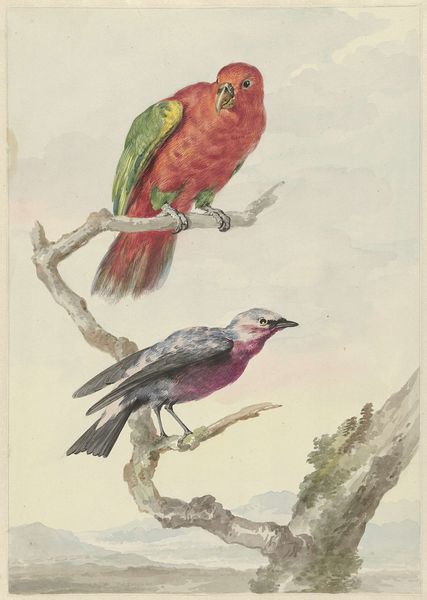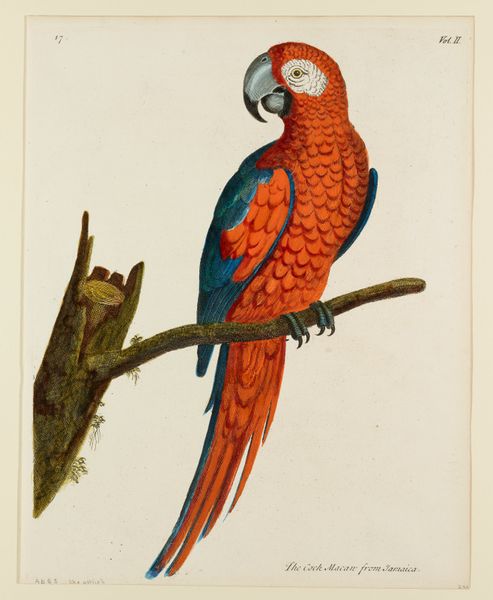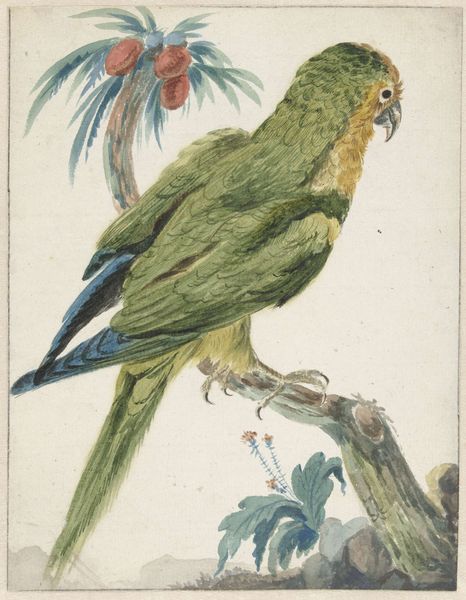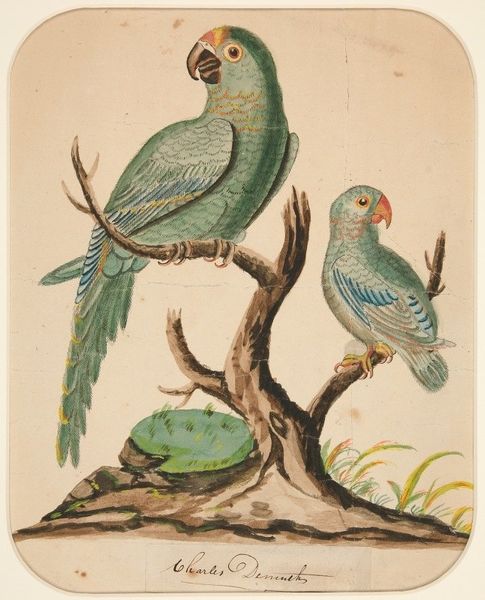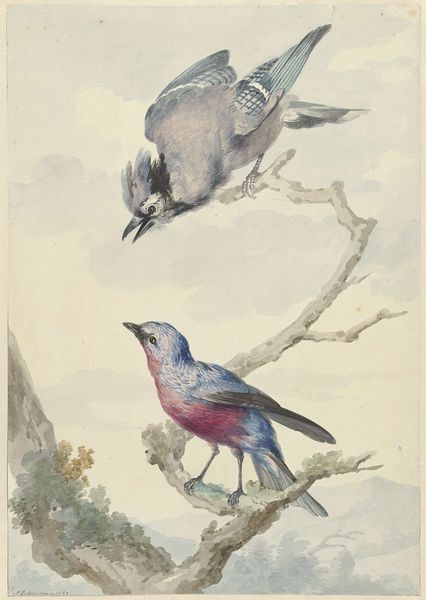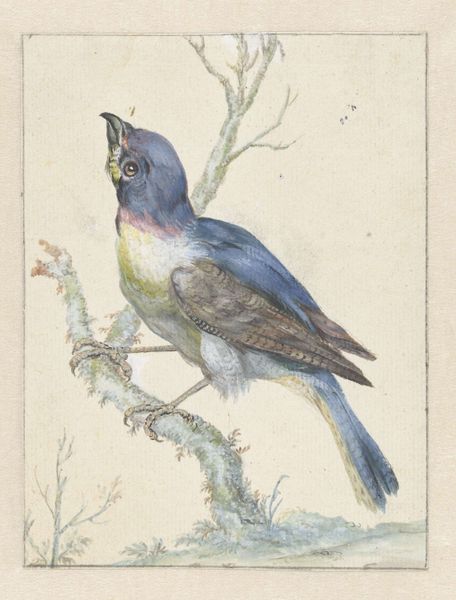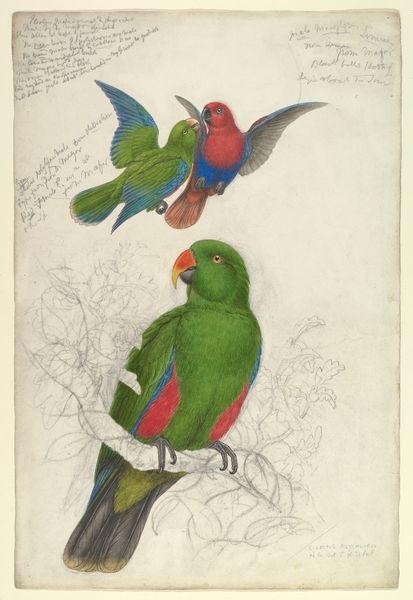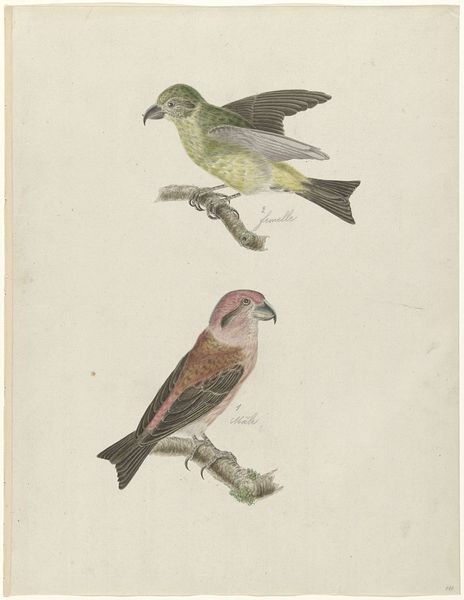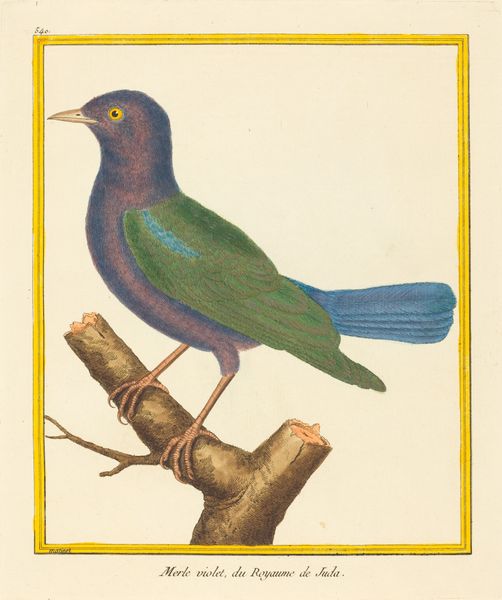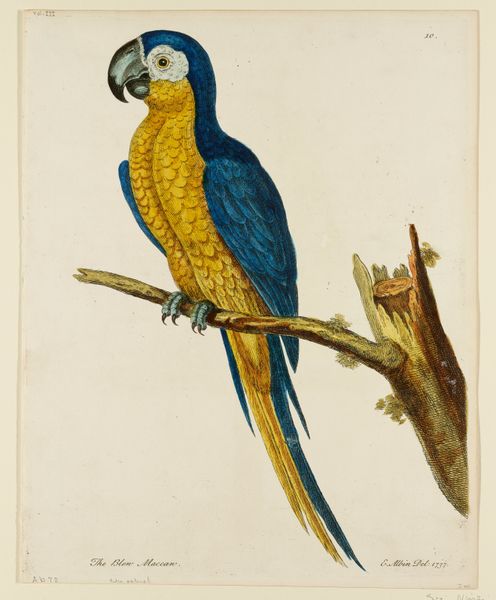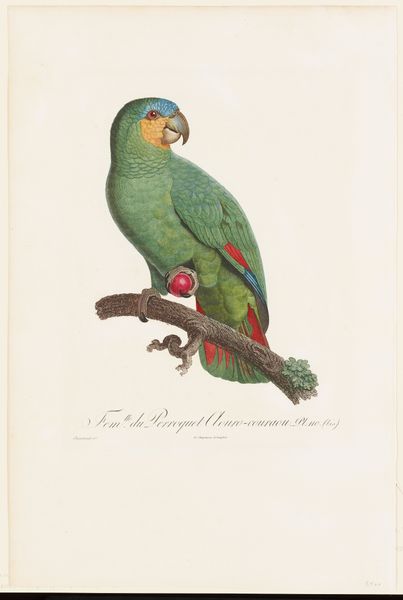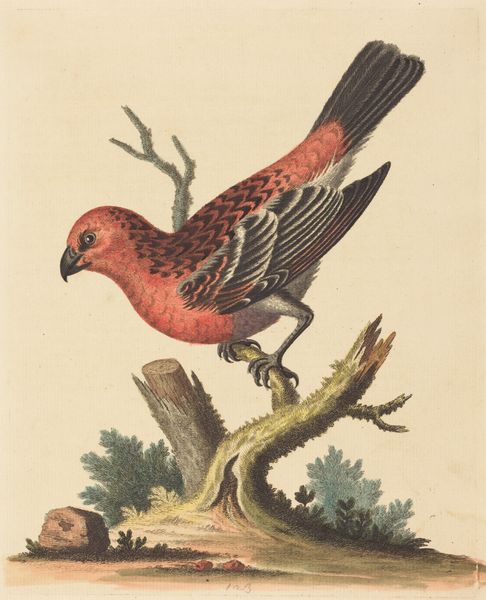
A Red-Fan Parrot (Deroptyus accipitrinus) and a Tawny-Shouldered Blackbird (Agelaius humeralis) 20 - 1775
0:00
0:00
drawing, gouache, watercolor
#
portrait
#
drawing
#
gouache
#
landscape
#
watercolor
#
15_18th-century
#
animal drawing portrait
#
watercolour illustration
#
watercolor
Copyright: Public Domain
Curator: Welcome. Before us, we have "A Red-Fan Parrot and a Tawny-Shouldered Blackbird," dating from the late 1770s, a watercolor and gouache by Jabes Heenck, housed here at the Städel Museum. Editor: My first impression is of a slightly unsettling stillness, even in the vibrancy of the parrot’s colors. The thinness of the wash gives it an almost ethereal quality, like a fading memory. Curator: These types of detailed renderings of flora and fauna were common in scientific illustration of the period, tied to European expansion and colonialism. Images like these fueled both scientific understanding and a romanticized view of the "New World.” Editor: The materials speak to that tension, don't they? Watercolor, gouache - relatively accessible mediums that could be shipped easily. But also demanding precision; requiring a kind of detached observation suited to scientific pursuit while subtly implying the complex logistical machine involved. It speaks volumes about how such knowledge was accumulated. Curator: Precisely. And note how Heenck uses watercolor for atmospheric perspective. The subtle landscape beneath seems to emphasize the bird's "exotic" nature to European audiences, subtly placing it within a colonial narrative. Consider who the patron might have been; the piece functions as both artwork and document. Editor: Look at the texture; almost deceptive, wouldn't you agree? From afar it might feel "natural" or spontaneous, yet look how the details—those crimson feathers, or the precise shadows beneath—show incredible control. Such detail also shows significant labor dedicated to its crafting. Curator: That detail also connects to its intended audience. Such meticulous representation suggests a collector interested in specimens as status symbols. Think of the menageries that were in vogue among European aristocracy—this functions similarly, on paper. The act of possession and study. Editor: Right, transforming living beings into possessions through craft and science...It is an unsettling transformation of labor into ornithological authority. It brings such an interesting layer to the piece. Curator: A fascinating contrast in how scientific discovery and the act of documenting can simultaneously strip subjects of their original context. Thank you. Editor: And for pointing out the layers beneath those careful washes, really revealing.
Comments
No comments
Be the first to comment and join the conversation on the ultimate creative platform.
